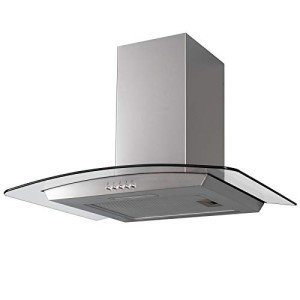This company has no active jobs
0 Review
Rate This Company ( No reviews yet )
About Us
Guide To Cooker Extractor Hood: The Intermediate Guide For Cooker Extractor Hood

Understanding Cooker Extractor Hoods: A Comprehensive Guide
In modern kitchens, the cooker extractor hood is more than simply a device; it is an important component that ensures a comfy and tidy cooking environment. This post dives deep into what cooker extractor hoods are, their functions, numerous types, key considerations for selection, and regularly asked concerns. Whether house owners are refurbishing their kitchens or simply wanting to update their cooking devices, comprehending the function of an extractor hood can help make informed choices.
What is a Cooker Extractor Hood?
A cooker extractor hood, also called a range hood or kitchen hood, is a gadget installed over the cooktop or stove. Its main function is to aerate the kitchen by getting rid of airborne grease, smoke, steam, and odors produced throughout cooking. This not only improves air quality but also helps in maintaining the kitchen’s tidiness.
Functions of Cooker Extractor Hoods
The primary functions of an extractor hood include:
- Filtration: Removing airborne particles and odors through filters.
- Ventilation: Providing fresh air by sucking in stale air, grease, and smoke.
- Lighting: Offering lighting over the cooking area for much better visibility.
- Heat Regulation: Preventing excess heat from collecting in the kitchen.
Types of Extractor Hoods
Cooker extractor hoods can be found in various types, each fit for various kitchen styles and cooking designs. Below is a table summing up the various types:
| Type | Description | Pros | Cons |
|---|---|---|---|
| Wall-Mounted | Attached to the wall above the stove. | Efficient suction, space-saving | Requires wall area, installation can be intricate |
| Under-Cabinet | Fits below cabinets. | Discreet, convenient for small spaces | Might have lower suction power |
| Island | Suspended from the ceiling, ideal for kitchen islands. | Aesthetic appeal, efficient ventilation | More pricey, might need expert installation |
| Downdraft | Built into the cooktop, increases throughout usage and pulls back when not needed. | Streamlined design, conserves overhead area | Usually less reliable than standard hoods |
| Filterless | Uses innovative filtration technology, lowering grease and odors without conventional filters. | Less upkeep, longer lifespan | Normally higher rate point, may not fit all kitchen styles |
Key Considerations for Choosing a Cooker Extractor Hood
When selecting a cooker extractor hood, a number of aspects should be considered to make the most of performance and ensure viability for private kitchen needs:
1. Size
Make sure the hood is at least as large as the cooktop. Optimal sizing is vital for effective air capture. For a better fit, think about:
- Standard cooktops: 30 inches hoods
- Professional cooktops: 36 inches or larger hoods
2. Suction Power (CFM)
The airflow of the hood is measured in Cubic Feet per Minute (CFM). A greater CFM indicates better ventilation, which is crucial for heavy cooking.
Advised CFM:
- Light cooking (e.g., boiling, steaming): 200-300 CFM
- Moderate cooking (e.g., sautéing, frying): 300-600 CFM
- Heavy cooking (e.g., grilling, wok cooking): 600+ CFM
3. Ducted vs. Ductless
- Ducted: Ventilates outdoors, highly effective but requires setup of ductwork.
- Ductless: Filters air and recirculates it back into the kitchen; installation is easier however might not be as effective.
4. Noise Level (Sonnes)
Pay attention to the noise level, specifically in open-concept homes. Look for hoods that run quietly, preferably creating less than 60 decibels on high speed.
5. Design and Aesthetics
Select a hood that complements the total kitchen decoration. Options can range from modern stainless-steel to traditional styles that mix perfectly.
6. Ease of Maintenance
Consider designs with detachable, dishwasher-safe filters to ease cleaning efforts. Some designs include filter pointers or indications to notify users when a modification is needed.
Benefits of Installing a Cooker Extractor Hood
Incorporating a cooker extractor hood into the kitchen uses several significant benefits:
- Improved Air Quality: Filters and distributes fresh air, lowering cooking smells.
- Improved Comfort: Minimizes heat and steam retention.
- Cleaner Kitchens: Reduces grease accumulation on cabinets and walls.
- Visual Appeal: Modern hoods function as decorative components.
Regularly Asked Questions (FAQ)
1. How typically should I clean my cooker extractor hood?
It is advised to clean up the filters every 1-3 months, depending on usage frequency. Routine cleansing prevents grease buildup, making sure ideal efficiency.
2. Can I set up a cooker extractor hood myself?
While some designs are created for simple DIY setup, complex ductwork or heavy models might require expert installation to make sure safety and efficiency.
3. How do I figure out the best CFM for my kitchen?
Measure your cooktop measurements and consider cooking styles. A general guideline is 1 CFM for each 100 BTUs of the stove’s maximum heat output.
4. What type of hood is best for a small kitchen?
Under-cabinet hoods or downdraft designs are ideal for small kitchens due to their compact style, saving valuable area without compromising function.
5. Are all extractor hoods noisy?
No, sound levels vary considerably. Try to find hoods that offer a greater CFM at lower decibels for a quieter efficiency.
Investing in a proper cooker extractor hood is necessary for producing a cleaner and more comfy cooking environment. By comprehending the different types, functions, and crucial considerations in selecting a hood, property owners can significantly boost their kitchen experience. With the best extractor hood in place, you’ll enjoy fresher air, minimized odors, and a more welcoming kitchen area that’s as functional as it is elegant.



